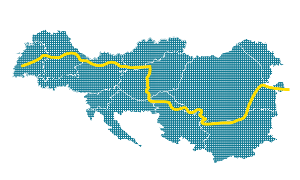Life cycle assessment (LCA): What is it all about?
Introduction
The responsible usage of our resources and the protection of the environment are relevant topics today’s society needs to deal with. Therefore, it is important to know how and in which way one’s daily business affects the environment. What are the possible environmental impacts of a product or service that is manufactured/offered or consumed? There are different possibilities and methods to examine this question and to analyse the potential impacts on the environment related to a product or service. This article will set the light on one of them: the life cycle assessment (LCA).
How can the environmental performance of a product or service be improved? Which indicators are relevant in this context and should be chosen? These are two examples for which LCA can provide an answer. Furthermore, LCA can help in the dialogue with decision-makers and stakeholders as well as within the marketing of a product or service.
“LCA addresses the environmental aspects and potential environmental impacts […] throughout a product’s life cycle from raw material acquisition through production, use, end-of-life treatment, recycling and final disposal (i.e. cradle-to-grave)” [1].

An LCA study consists of four phases:
Phase 1: Definition of goal and scope
Phase 2: Life cycle inventory analysis (LCI)
Phase 3: Life cycle impact assessment (LCIA)
Phase 4: Interpretation
In phase 1 the scope of the LCA is set, taking into account boundaries given by the system and the different level of detail which varies with the subject, the intended use and the goal of the particular study.
The LCI “is an inventory of input/output data with regard to the system being studied” [1], therefore involves data collection and is the content of phase 2.
Phase 3 is the LCIA. To evaluate the results of phase 2 and to assess its significance from the environmental point of view, further information is required which are generated in this phase.
The interpretation as phase 4 includes the summary and discussion of the results of the LCI and/or the LCIA. It is the “basis for conclusions, recommendations and decision-making in accordance with the goal and scope definition” [1].
If you plan to compare different LCA studies with each other, they need to be equivalent with regard to the assumptions made and their context.
Another fact that needs to be mentioned is that in the first place LCA focuses on the environmental aspects of a product or service and not on economical or social ones which have to be addressed separately [1]. Therefore, there exist different types of LCA: “environmental LCA (E-LCA), social LCA (S-LCA), and life cycle sustainability assessment (LCSA)” [2].
So, and where to find more details on LCA now?
LCA is part of the International Organization for Standardization (ISO) 14000 series on environmental management [3]. The first edition of ISO 14040 is from 1997, the second and current version is from 2006. It is complemented by ISO 14044 of 2006. While ISO 14040 has the title “Environmental management — Life cycle assessment — Principles and framework” [1], the title of ISO 14044 is “Environmental management — Life cycle assessment — Requirements and guidelines” [4] which shows pretty well the difference of both ISO norms.
Apart from the methodological framework, ISO 14040 includes a general description of LCA as well as information on reporting issues and a critical review. The last two topics are even more substantiated in ISO 14044 which gives more details regarding the requirements related to the conduct of an LCA.
If you like to know more about LCA and the system behind now, follow the links below and have a closer look at it.
[1]https://www.iso.org/obp/ui/#iso:std:iso:14040:ed-2:v1:en:fn:1
[2]https://www.lifecycleinitiative.org/starting-life-cycle-thinking/life-cy...
[3]https://www.iso.org/files/live/sites/isoorg/files/archive/pdf/en/theiso1...
[4]https://www.iso.org/obp/ui/#iso:std:iso:14044:ed-1:v1:en

